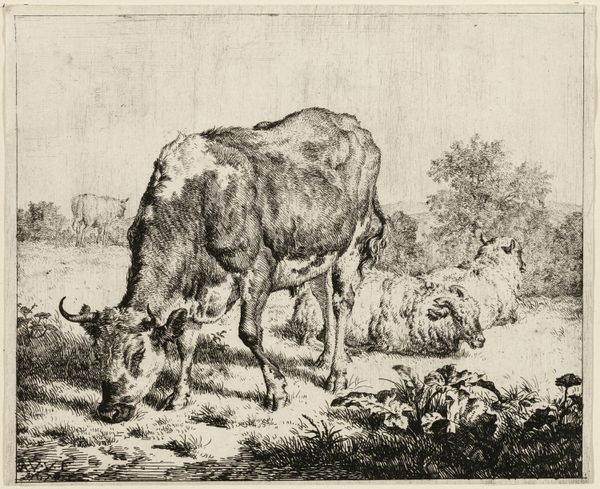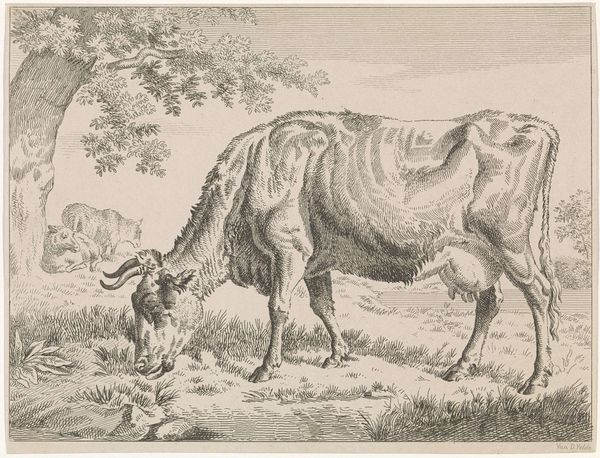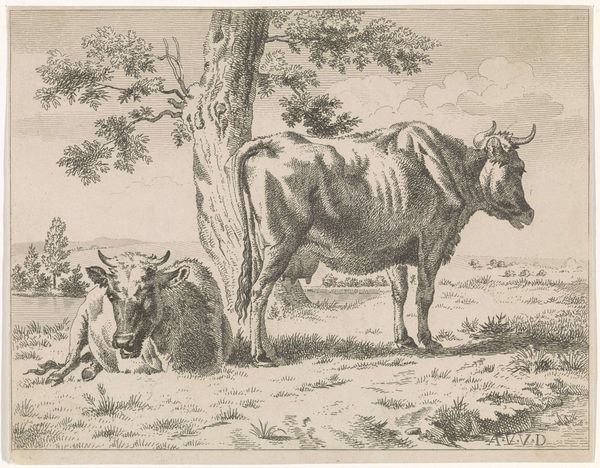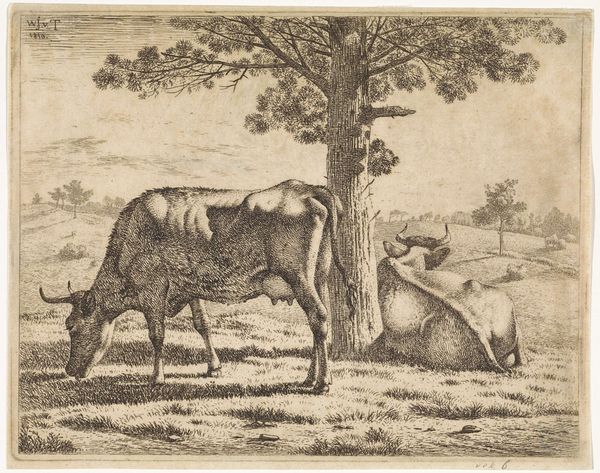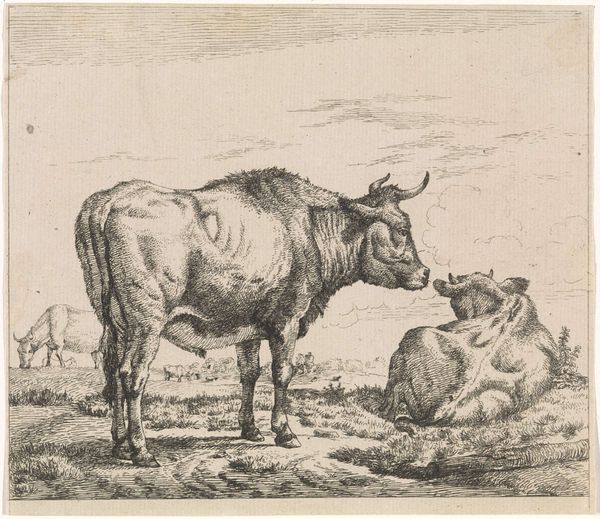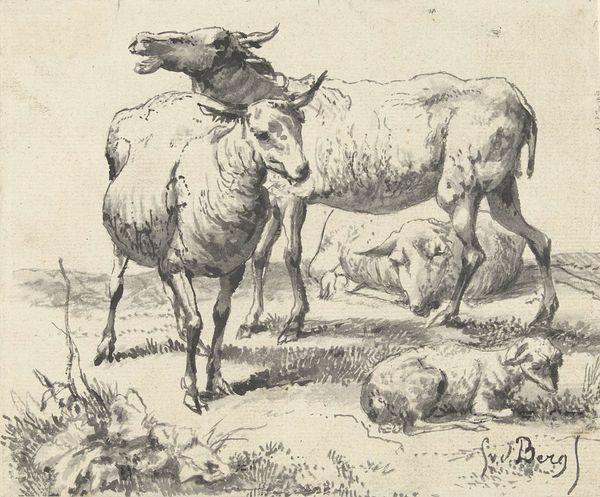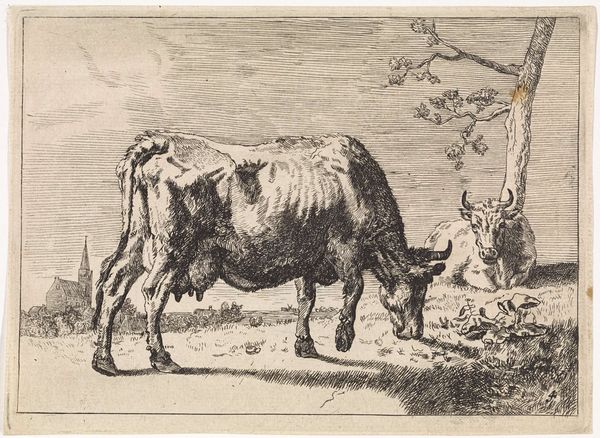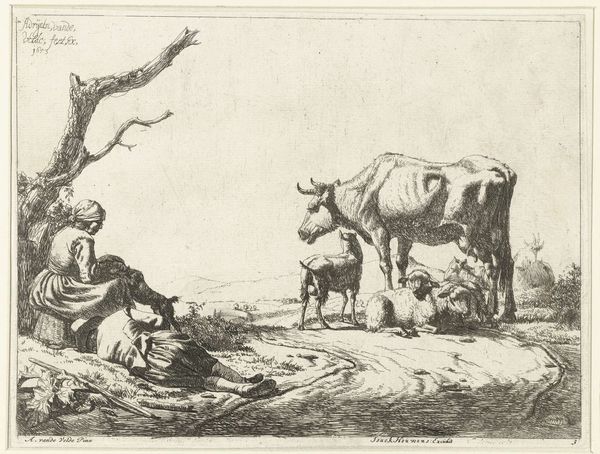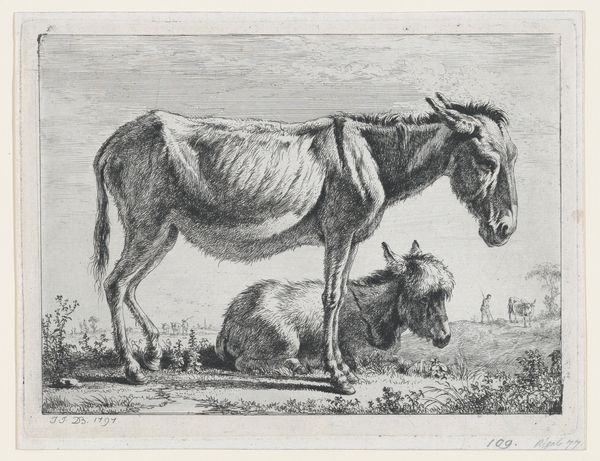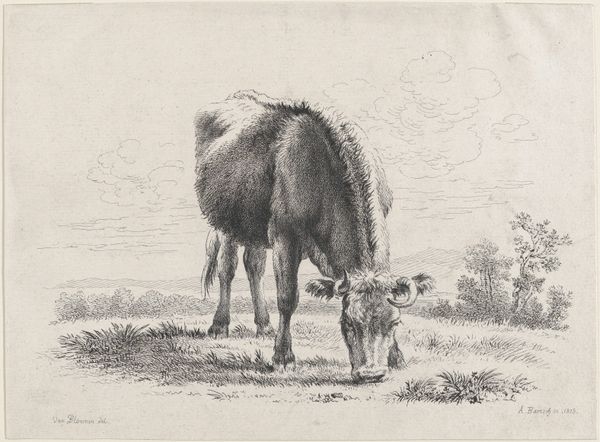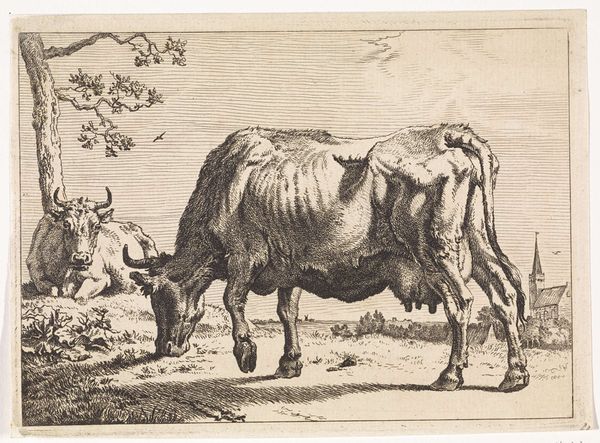
print, engraving
#
animal
# print
#
landscape
#
genre-painting
#
engraving
#
realism
Dimensions: height 134 mm, width 168 mm
Copyright: Rijks Museum: Open Domain
Curator: Right, let’s dive in. Before us is an engraving from around 1670-1720, known as "Grazende koe bij twee schapen," which translates to "Grazing cow with two sheep." Its creator? Well, that's lost to history—it's attributed to an anonymous artist, and it resides here at the Rijksmuseum. Editor: Okay, first impression? It's…peaceful, almost unnervingly so. It feels like stepping back in time to a simpler, slower pace. The light is so gentle; I want to be there lying in that field with those sheep. Curator: That sense of peace isn’t accidental, I think. This work participates in a longer tradition of pastoral imagery that idealizes rural life. It presents a counter-narrative, perhaps, to the urban anxieties of the time, particularly among the rising merchant class in the Netherlands. This imagined return to nature allowed for a reimagining of labor and the landscape. Editor: Interesting. The detail is impressive, considering it's an engraving. Look at the texture of the cow's fur, and the way the artist has captured the light on the grass. There is something about the texture in the cow's fur; this is also juxtaposed with a certain stillness and emptiness from the light background which somehow makes the depicted landscape also feel lonely. It's more than just realistic; it evokes a mood, a feeling of quiet contemplation. Curator: Precisely. Realism emerges not just in the faithful representation of the animals and the landscape, but also in the underlying social values. Consider the implications of showcasing agricultural life as inherently tranquil and virtuous, possibly downplaying the socio-economic hardships and realities that agricultural communities historically encountered. There’s an argument to be made about idealizing labor and life under the guise of "realism" which we ought not forget. Editor: That is an interesting insight. It makes me wonder about the artist’s intentions. Are they glorifying nature, or just documenting it? Or perhaps they're gently nudging us to appreciate a way of life that's slipping away? Curator: Perhaps all three. And it also brings up questions around accessibility and who this artwork was created for. Prints like these were often more affordable and could circulate more widely than paintings, bringing this idealized vision of rural life to a broader audience. Editor: You’ve certainly given me a lot to mull over. It appears at first glance to be such a simple scene but holds deeper complexities regarding how social concepts might intersect and take a foothold on this piece. Curator: Agreed. Even seemingly simple pastoral images carry rich and complex layers of meaning once we begin to contextualize them within their historical, social, and economic moment.
Comments
No comments
Be the first to comment and join the conversation on the ultimate creative platform.
